Review: Civic Theatre Gives Othello a Contemporary, Feminist Twist
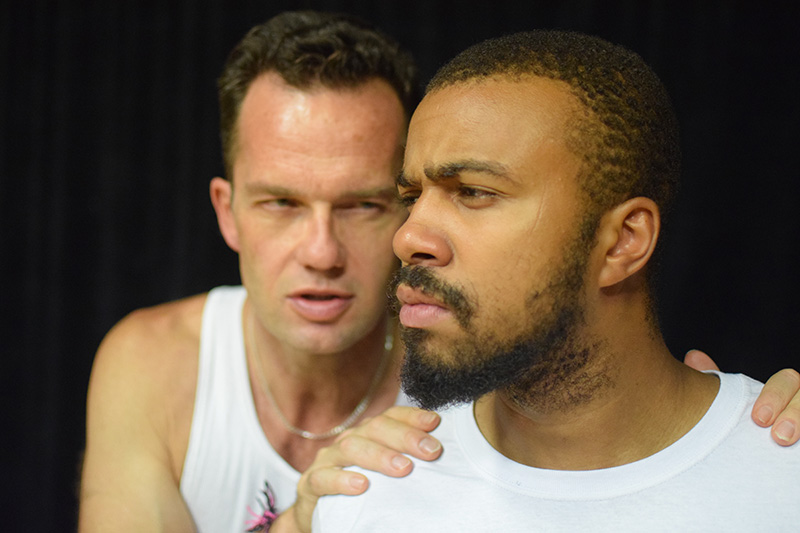
Directors are forever trying to make Shakespeare more relevant for contemporary audiences. They place the Bard’s plays in new settings, emphasize themes that seem more relevant, sometimes even tinker with the text to clear up muddy passages.
Director David Widmayer makes an interesting attempt to breathe new life into Shakespeare’s tragedy of jealousy and rage Othello for the Ann Arbor Civic Theatre. His conceit is to move the play from its Renaissance time and Venetian setting to Saigon in 1969 and American soldiers preparing to fight in the jungle war with North Vietnam and the Viet Cong.
Widmayer also shifts some thematic emphasis, while staying true to Shakespeare’s language. The play is primarily about Othello as a stranger in a strange land, a black Moor in a white European city (here meant to represent Washington D.C.), who has emerged as a critical military leader. The Venetians (the government) need him but also never let him forget that he is not one of them. This leads to a fatal insecurity in his relationship with his new wife, Desdemona, daughter of a senator. The racial implications remain but Widmayer puts emphasis on two other themes: male aggression and blind ambition and the manipulation and disregard for women.
Shakespeare is always a challenge for community theater groups and for established professional repertory theaters alike. The plays are primarily in verse, the structure is awkward to modern ears and some passages are difficult to decipher. But the challenge is worth it for the rich beauty in the verse and deep insights in character and relationships.
Few relationships are more intense then the one between Othello and his conniving subordinate Iago, a man as jealous of Othello as he makes Othello jealous of the loyal and loving Desdemona.
Widmayer succeeds in drawing attention to other the themes and, in some aspects, bringing a modern attitude to the portrayals. He keeps the place names the same, as the program notes, to preserve the meter of the verse but this somewhat defeats the change of place. A 60s soundtrack between scenes is nice but doesn’t quite do it either.
The acting styles do not all mesh well though there is commendable effort throughout and some performances perfectly match what Widmayer sets out to do, make the play more contemporary.
The play’s plot, of course, revolves around Othello’s rapid advancement in the military. He marries a senator’s daughter and the senator is irate but tempered by the impending military crisis. Iago is a lieutenant to Othello and a man who uses his tongue and his wiles to poison Othello into believing Desdemona is having an affair with a rising young officer and Othello aide, Cassio. Iago uses his bright and loving wife Emilia and a former suitor of Desdemona, Roderigo, in his plot.
In the two major female roles, Annie Dilworth as Desdemona and Carol Gray as Emilia find that sweet spot that Widmayer was aiming for. They read Shakespeare’s language naturally, conversationally and without broad gestures. They also move with the ease and self-possession of modern women. These are women who are sorely wronged by their men. Dilworth makes Desdemona a witty, kind, and loving spouse whose later despair and resignation is all the more tragic. Gray’s Emilia is not the nagging wife of many productions but a spirited woman expecting to be treated as an equal partner by the man she loves but doesn’t really know.
Russ Schwartz as Cassio also speaks the language naturally. He portrays Cassio as a vulnerable subordinate wanting to prove himself but not quite at home in the uber macho military environment. Schwartz seems to combine a boyish charm with a deep insecurity. Greg Kovas brings humor to the role or Roderigo, a loud-mouthed drinker with a clumsy man-to-man bonhomie attitude.
Sean Sabo’s Iago is performed in a more traditional style. His gestures are broader, the language less conversational. He seems a bit stiff at first but as he outlines his deadly plot, Sabo digs deeper into the character. In many ways, Iago has the greatest burden of language and complexity of character. In his mind, he is a man denied who must bend to someone he sees as an inferior. But he conceals his evil with a sly and twisted charm and show of innocent good will. Sabo makes that difficult connection.
Justin Gordon brings a ferocity to his portrayal of Othello. He struts with the bravado of a man who knows that what matters is how he shows himself to these men who will always regard him as a lesser man no matter how much they depend on him. However, Gordon does not project or enunciate clearly enough, and in the final scenes he doesn’t capture the tension or sadness of realizing fully the mistake he’s made. In earlier scenes, he shines in showing a playful side to Othello’s relationship with Desdemona, but overall, the play’s crucial bitter sweetness is lost.
This is a good effort and worth seeing for the interesting shift in emphasis, especially at a time when male attitudes about women have played a prominent role in our current presidential election. As in Othello, the personal and the political have become sadly entangled.
Hugh Gallagher has written theater and film reviews over a 40-year newspaper career and was most recently managing editor of the Observer & Eccentric Newspapers in suburban Detroit.
The Ann Arbor Civic Theatre production of Othello continues 8 pm Oct. 28-29 and 2 pm. Oct. 30 at the Arthur Miller Theatre on the North Campus of the University of Michigan. For tickets and information, call the box office at (734)971-2228 or go online to http://www.a2ct.org.
Events Roundup: Theo Katzman, Ofrenda Altars, & More

UMS Wallace Blogging Fellow Adam DesJardins recommends some great upcoming musical performances and art installations. From the Arab-American National Museum's exhibit of graphic novelist Leila Abdelrazaq's work to a Blind Pig appearance by Vulfpeck's Theo Katzman and collaborator Joey Dosik, he's got your early November booked.
“Thou shalt bringeth the funk” is a quote no one ever said to me. Luckily, funk-bringers Theo Katzman and Joey Dosik will be doing just that when they grace the stage at the Blind Pig in Ann Arbor on November 5." writes DesJardins, in case you needed more of a reason to buy tickets for the show.
Catch more of UMS Wallace Bloggers DesJardins and Marissa Kurtzhals in their weekly roundups!
Preview: Macbeth comes to Huron High School
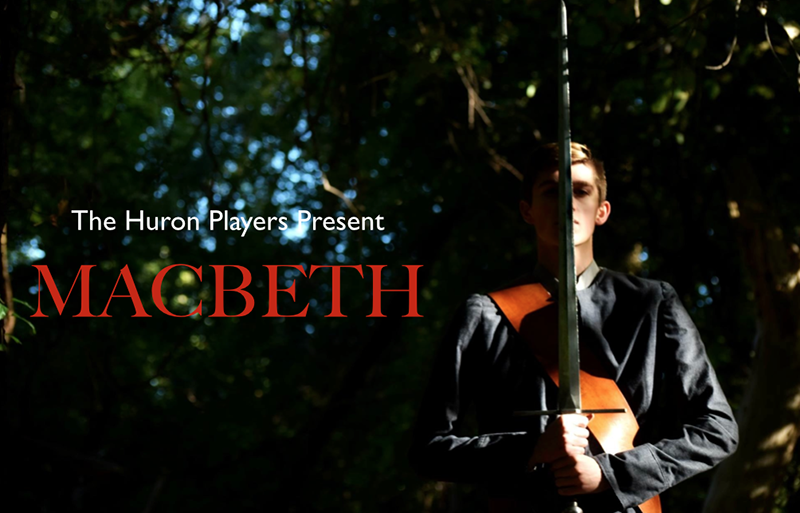
Something wicked this way comes to Huron High School beginning Friday, October 28, when the Huron Players present Shakespeare’s Macbeth. Celebrate the spooky season, enjoy some epic battles - and get extra credit in an English class - with the Shakespeare play where fair is foul, and foul is fair.
This classic tragedy of greed gone bad begins when Macbeth, a Scottish general, receives a prophecy from a trio of witches that he will one day become King of Scotland. Spurred on by his vicious wife and and consumed by his own ambition, Macbeth’s fate is cast when he murders King Duncan. And from there things get much worse.
To learn more about the cast and crew visit the Huron Players website.
Amy Cantú is a Production Librarian at the Ann Arbor District Library.
Macbeth performances are October 28th, 29th and November 4th, 5th at 7:30 pm in Huron's New Theater, 2727 Fuller Rd. Tickets: $6 students/seniors and $8 general admission. Some themes may be unsuitable for children.
Preview: ypsiGLOW
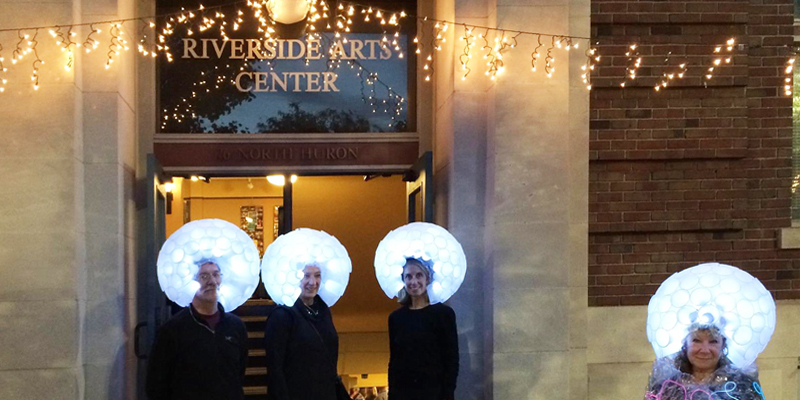
YpsiGLOW--the first annual family-friendly, multi-sensory light, art, and music celebration of fall--will be held in downtown Ypsilanti this Thursday, October 27. Festivities commence at 5 pm at the Main Branch of the Ypsilanti Public Library at 229 W. Michigan Avenue with a preGLOW kid's costume party. Treats, activities, games, and a costume contest will be followed at 6:30 pm by a walking costume and luminary parade from the library to the nearby ypsiGLOW block party on Washington between Pearl and Michigan Avenue.
As a DJ spins tracks from his scissor-lift perch, a UV light-activated dance floor and blacklight animated alleys provide space for costumed adults and kids to move with the music. YpsiGLOW artists will perform on the street and in shop windows. Blacklight body artists will be on hand to paint faces and make hair glow in the dark. Also featured will be a blacklight reactive superhero mural, a giant luminary skull, a six-foot-tall grizzly, jack-o-lanterns, shadow puppets, and much more. Dancers from the WCC Performing Arts Department and the EMU Dance crew will perform, and films and projections will light up the night. Costumes are encouraged, trick-or-treaters are welcome and stores will be open until 9:30 pm. There is ample free parking on streets and in city lots for the event.
And for adult GLOWers who want to continue the party, there is an afterGLOW in the spooky black cellars of Bona Sera with DJ Ryan Gerald until midnight.
It took a village to get this event going. It began two years ago when members of the Washtenaw Convention and Visitors Bureau, The Downtown Association of Ypsilanti and Wonderfools Productions (of Ann Arbor Festifools fame) decided a Halloween-season festival would be a great addition to Ypsilanti's already very successful First Fridays. Wonderfool organizers Shary Brown, Mark Tucker, Jeri Rosenberg, and Adriana Zardus began meeting with creative members of the Ypsilanti community, the Ypsilanti Public Library staff, and local educational institutions as well as with civic leaders. Together, they developed a plan to leverage the outsize creative capital of Ypsilanti, the under-utilized downtown real estate, and a little seed money to create the one-night annual cultural festival that is ypsiGLOW.
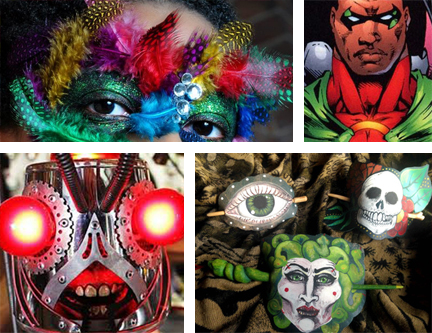
I asked some members of the Wonderfool production team about their process:
"Two of our first partners were Barry LaRue and Will Hathaway of Riverside Arts Center. They, in the space of less than a week, had sent out email introductions. So we spent two and a half to three months just meeting people," says Shary Brown.
Adriana Zardus adds, "Those three months were really important--we called it our discovery phase. We weren't prescribing any ideas. We were just saying that this is what our organization does: we connect different businesses, artists, and community organizations together to make their own creative vision... There's such a wealth of artists and creatives and community leaders that it was the easiest thing in the world to let go of the creative reins and hand it over.”
One thing that was very clear to the team from the start though, was that the event had to have its own unique Ypsi character that to showcase the strengths of this diverse artist, musicians, and creatives-rich community, starting with the choice of a name. They came up with ypsiGLOW in consultation with community members. It was an instant hit.
"GLOWing is positive, it's artistically descriptive and appropriate for the season,” says Shary Brown.
To prepare for the big night, 23 ypsiGLOW workshops have been held by community and arts organizations like Ozone House, Project 23, FLY Children’s ArtCenter, and many others. Masks, jack-lanterns, luminaries, and giant light creatures are now ready to make the night GLOW.
YpsiGLOW will get its first airing this Thursday but certainly not its last. The Wonderfool production team and Ypsi’s artists, educators, businesses, and community leaders are hoping to start an annual tradition that will bring everyone in the Ann Arbor/Ypsi area together for a satisfying shared community art experience for all ages.
K.A. Letts is an artist and art blogger. She has shown her work regionally and nationally and in 2015 won the Toledo Federation of Art Societies Purchase Award while participating in the TAAE95 Exhibit at the Toledo Museum of Art. You can find more of her work at RustbeltArts.com.
The first ypsiGLOW is Thursday, October 27, 2016, from 6:30 pm to 9:00 pm at Washington Street (between Pearl St. and Michigan Ave.) in Ypsilanti. Glow-gear and costumes are strongly encouraged.
Review: Gimme Danger
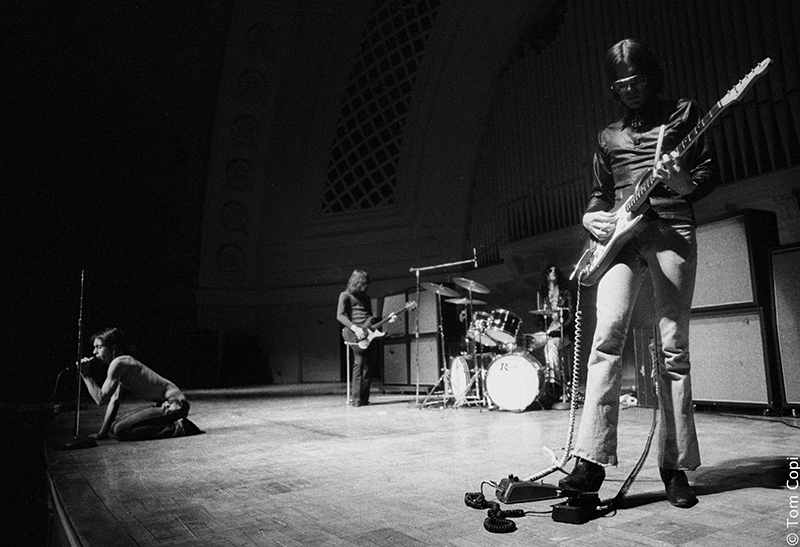
When Ann Arbor punk pioneers the Stooges played a tribute show for their deceased guitarist Ron Asheton at the Michigan Theater in 2011, arthouse director Jim Jarmusch was in the house. Having announced that he was beginning work on a documentary about the Stooges just the year before, one might have guessed that the Cuyahoga Falls-born director behind Night On Earth and Broken Flowers was planning to include the Ann Arbor show in his film.
But the amusing stories of Jarmusch's terse interactions with townies are the only real creative legacy the director left behind from his Ann Arbor visit. There's no footage from the Asheton tribute in Gimme Danger, Jarmusch's Stooges documentary, which will open in Detroit on Oct. 28. And in many ways, that's for the best.
Jarmusch was at the Asheton tribute, and presumably has been around for other moments in the lives of Iggy and Co. over the past decade-plus, as a friend and casual observer, not a documentarian. Jarmusch first worked with Iggy Pop, the Stooges' legendary and arrestingly bizarre frontman, on a standout scene from Jarmusch's 2003 narrative film Coffee and Cigarettes. In 2010 Pop personally requested that Jarmusch make a documentary about the band. The resulting film plays not like a staid rock biopic but like an intimate conversation between friends, a fun, loosey-goosey retelling of the tumultuous tale behind one of the most influential bands in rock.
Jarmusch begins the film in 1973 with one of the band's apparent endings. At the time, the Stooges had already released their three seminal albums The Stooges, Fun House, and Raw Power, but as a title card puts it, "They were dirt." Critically maligned and dragged down by Pop's drug abuse and increasingly unmanageable behavior, the band called it quits in 1974. From there, Jarmusch jumps back to the Stooges' childhoods, examining how they got to that low point and how they bounced back in 2003 to begin touring extensively in response to broad recognition from a host of younger artists. The stories, from the tale of Pop calling up Moe Howard to request his permission to use the name "The Stooges" to Pop's explanation of Soupy Sales' influence on his minimalistic lyrics, are outrageous and often hilarious.
Jarmusch's focus is relatively narrow. He interviews almost no one other than Iggy and the Stooges themselves (including Minutemen bassist Mike Watt, who toured with the band throughout the 2000s). The interview settings are almost laughably casual; Pop gives one of his interviews in a laundry room, and he idly plays with his bare feet as he talks. Guitarist James Williamson appears to have given his interview in a public bathroom, guitar in his lap.
The director doesn't attempt to editorialize or add much of his own flair to the material. Compensating for the lack of archival photos or footage of the band, he frequently makes amusing use of period-appropriate stock footage and even a couple of animated sequences to illustrate the Stooges' tales of their misadventures. But overall he seems to revel in the entertainment value of letting the Stooges tell their own stories. When you've got the gaunt, bug-eyed, slightly anxious Pop alongside the gaunt, hood-eyed, utterly deadpan drummer Scott Asheton (now deceased), what better method than to just wind these two characters up and let them go?
The relatively straightforward documentary may seem to fit oddly into the oeuvre of the director who made such visually striking and idiosyncratic films as Mystery Train and Only Lovers Left Alive, but in a way it also occupies its own very singular territory. The tale told here is unlikely to throw Stooges aficionados any new curveballs; Jarmusch himself has noted the difficulty he had finding any new footage of the band to include in the film. And the film's relative modesty (especially given its frequently outrageous subjects) seems unlikely to cause enough of a stir to attract many Stooges newbies to the theater. Like any of Jarmusch's other films, Gimme Danger is perfectly happy being exactly what it wants to be – a thoroughly fun, no-frills, firsthand account of the story behind one of rock's greatest bands – and nothing more.
Patrick Dunn is the interim managing editor of Concentrate and an Ann Arbor-based freelance writer whose work appears regularly in Pulp, the Detroit News, the Ann Arbor Observer, and other local publications. He ain't got time to make no apologies.
Gimme Danger premiered last night, October 25th, with a special screening at the Detroit Film Theater (DFT) featuring Iggy Pop and Jim Jarmusch. It opens officially Oct. 28 at the Detroit Film Theater, and will expand to a wider release on Nov. 4.
Preview: Neighborhood Theatre Group's "Black Cat Cabaret"

Halloween is one of my favorite times of the year.
This week I can choose from a wide variety of local events to get in the Halloween mood, including concerts, costume contests, hayrides and more. I may even enter a pumpkin carving contest.
Neighborhood Theatre Group, Ypsilanti’s new theater company, has a brand new Halloween offering – a delightfully entertaining mix of Halloween music and theater. Featuring a full bar, costume contest, and the NTG “Haunted” House Band, Black Cat Cabaret is directed by Kristin Anne Danko and features local performers Colleen Cartwright, Alice Duhon, Eric Hohnke, Greg Pizzino, Angela VanKempen, and Craig VanKempen.
Neighborhood Theatre Group is dedicated to cultivating a welcoming and collaborative environment for local theatre artists while providing audiences with a very unique and intimate theatre experience. Featuring original works, sketch shows, cabarets, and self-produced videos – NTG believes in theatre’s ability to bring individuals together. They guarantee that this “spooktacular evening” of music and theatre will get you in the Halloween spirit.
Black Cat Cabaret runs Friday and Saturday, October 28 & 29 at Bona Sera Underground in downtown Ypsilanti. Performances are at 8:30 pm with doors opening at 7:30 pm. Tickets are $10 General Admission, $5 Students (with a Valid ID) and can be pre-purchased at http://www.brownpapertickets.com/event/2605416.
Tim Grimes is manager of Community Relations & Marketing at the Ann Arbor District Library and co-founder of Redbud Productions.
Black Cat Cabaret runs Friday and Saturday, October 28 & 29 at Bona Sera Underground in downtown Ypsilanti. Performances are at 8:30 pm with doors opening at 7:30 pm. Tickets are $10 General Admission, $5 Students (with a Valid ID) and can be pre-purchased at http://www.brownpapertickets.com/event/2605416 .
Review: Bestselling author Margaret Atwood at Rackham Auditorium

The full-capacity crowd at Rackham Auditorium on Friday night not only got to hear witty insights from one of our era’s greatest, most accomplished writers, Margaret Atwood (decked out in black and orange for Halloween); they also got to hear the septuagenarian Canadian novelist/poet rap.
Why? Because her newest novel, Hag-Seed, features prisoners putting on their own version of Shakespeare’s The Tempest, and one excerpt Atwood read included an inmate’s extended riff that ends with “Oh no! Oh no more Prospero,/Too bad, how sad, that’s what they said:/He must be dead./So now I’m the man, the man, the big man,/I’m the duke, I’m the duke, I’m the duke of Milan.”
Hag-Seed is one of a group of books that have been published as part of the Hogarth Shakespeare project, wherein Shakespeare plays are retold by acclaimed contemporary novelists. Literati Bookstore sponsored Atwood’s Ann Arbor appearance.
Atwood - seated alone on Rackham’s stage, beside a round, low table with a floral arrangement - earned several laughs from the crowd as she read portions of her new novel, holding the book with hands sheathed in glow-in-the-dark skeleton gloves. (She said she was wearing them in honor of the upcoming U.S. Presidential election.)
When she finished, she said, “Now, if you have questions, I will answer them. If I don’t like your question, I will reformulate it. We do learn things from watching TV, don’t we?”
Many of the crowd’s questions concerned one of Atwood’s most enduring, classroom-friendly novels, The Handmaid’s Tale (1985) – a dystopian novel that imagines that, following a terrorist attack that leaves our democracy in ruins, a revolution with a theocratic bent suspends the U.S. Constitution, and as a complete societal re-organization happens, women are stripped of all rights.
Atwood said that when she wrote The Handmaid’s Tale, she’d been reading about America’s 17th century Puritan theocracy, as well as mid-century dystopian novels like George Orwell’s 1984, Ray Bradbury’s Fahrenheit 451, and Aldous Huxley’s Brave New World.
“I’d always wanted to write one, but most of them are written from a male point of view, and I thought it would be interesting to turn that around and take a female point of view for the narrator,” said Atwood. “ … I made it a rule in writing the book that I would not make anything up. I would use only things that had really actually happened somewhere at some time, or for which we had the technology.”
Atwood noted that a TV series inspired by The Handmaid’s Tale is now filming in Toronto, and she made a cameo appearance in it.
Regarding writing genre fiction, Atwood said, “I don’t divide books up that way at all. I divide them into books I like and books I don’t like. Because it doesn’t matter what genre is on the shelf in the book store. … It’s like a filing convenience. … So I do those things because it never occurred to me not to do them.”
One audience member raised the question of why Atwood set her take on The Tempest inside a prison, when the environment plays such a key role in the play. “The last three words of the play are, ‘Set me free,’” Atwood said. “ … You don’t say ‘set me free’ unless you’re not free. … Once you’re into themes of revenge, you’re always into stories about liberation from something.”
Atwood read and spoke for a little over an hour, and one of the last questions came from two high school teachers who asked what she’d tell young people about why reading is important. “Language is the oldest fully human thing that we have, and stories are pre-built-in,” said Atwood. “ … It had to have been a survival trait over long numbers of years. So stories are how we understand our world. We understand them partly through graphs and charts, but only if somebody tells us the story behind the graphs and charts. … What does this mean that the blue line is going up, and the red line is going down?”
Before wrapping up the question-and-answer portion of the evening (and beginning the book signing part), Atwood made a joke regarding the upcoming U.S. Presidential election: “In The Handmaid’s Tale, Canada’s the place she escaped to, so you’re all welcome.”
Jenn McKee is a former staff arts reporter for The Ann Arbor News, where she primarily covered theater and film events, and also wrote general features and occasional articles on books and music.
Preview: Celebrating 20 Years of Edgefest in One Year

To do anything for twenty consecutive years is an accomplishment to be lauded with high praise. When it involves the cutting edge of creative improvised jazz, it’s an even larger feather in one’s cap.
Twenty years of presentations at Edgefest will be summarized in this year’s event. Bringing back longstanding favorite ensembles, emphasizing our local contingent of progressive-thinking musicians, and adding new twists and turns other events might not dare attempt bodes well for future generations of patrons and performers to continue looking up while getting down.
Over the decades, Edgefest has received national and international acclaim for their risk-taking bookings. Substantial grants have financially buoyed their ambitious line-ups, astute listeners have reveled in the innovative music heard here and nowhere else in one setting, while many musicians look forward to their return to Ann Arbor. Even throughout the year with the regular Music At The Edge series, Michigan audiences always have the opportunity to hear this music during any given season.
What is creative improvised jazz? It takes on many forms, from pure spontaneity to open ended composed work that goes beyond notes on a page. It can be serene or jarring, pastoral or jagged, even incorporating true new music based on folk forms from other countries melded with the swing, blues, and improvisation of finely tuned American-based jazz. For sure every flavor is different, yet each somehow holds a universal appeal that even the uninitiated can appreciate if they take the time--and the equally bold step--not to pre-judge but instead to just listen deeply.
Pre-Edgefest events have already taken place. Saxophonist Dave Rempis and Gunwale played Encore Records October 14. A week later the substantive duo of drummer Gerry Hemingway and trombonist Samuel Blaser performed at Encore October 7. That afternoon the University of Michigan hosted a piano duet between Kris Davis and Craig Taborn and included a sampling of her new CD Duopoly featuring the two pianists and others with Davis in strictly composed or improvised duets.
Trumpeter Mark Kirschenmann and keyboardist Stephen Rush’s electric Miles Davis tribute band Big Fun played the University of Michigan Museum of Art October 2. Both Kirschenmann and Rush are part of Edgefest’s proper line-up.

What sets Edgefest apart is the inclusion and emphasis of our local area performers, including recent Ann Arbor transplants such as percussionist Matthew Daher and bassist Will McEvoy; saxophonists Marcus Elliot and Tim Haldeman; the fascinating Balkan fusion group Ornamatik; U-M professors Kirschenmann, Rush, and Ellen Rowe; U-M graduate (and student of Geri Allen) Michael Malis, who was at the A2 Jazz Fest with Andrew Bishop and has been touring and appearing in New York City in support of his recent debut CD Lifted from the No of All Nothing; Tad Weed’s Freedom Ensemble, celebrating the music of pianist Herbie Nichols; tabla drum master John Churchville; Michigan’s famed Northwoods Improvisers; multi-instrumentalist Ken Kozora; multi-woodwind player Piotr Michalowski with the potent MoTreetown Collective and their three horn front line reminiscent of the Griot Galaxy; keyboardist Kenn Thomas; and U-M students performing large ensemble works written by John Hollenbeck.
The festival has gone though its share of trials and tribulations. At times crossing international borders has been tricky for musicians. Late arrivals or last minute cancellations always present timing problems, especially during the tragic and memorable Hurricane Sandy. And the festival has lost a few mighty performers who have passed away, including European multi-instrumentalist favorite Lars Hollmer, Chicago tuba player Aaron Dodd, trumpeter Paul Smoker, bassist Dominic Duval, and Dutch master Willem Breuker.
A special set during this year’s fest will come from the group TranceFormation in tribute to pianist Connie Crothers, who recently passed on. A disciple of Lennie Tristano, Crothers was initially in Ann Arbor nearly ten years ago when the International Society for Improvised Music hosted their annual conference here, and then played at KCH. A tribute to Crothers will be staged, featuring vocalist Andrea Wolper, bassist Ken Filiano, and saxophonist Vinny Golia, celebrating his 70th birthday.
Pianist Kris Davis will be the clear star of Edgefest for this year, as part of a tour supporting her 2014 trio CD Waiting For You To Grow on the Clean Feed label with drummer Tom Rainey and bassist John Hebert.
Then again, there are favored and featured artists returning, most notably Golia and Filiano in other bands; the legendary Trio 3 with Oliver Lake, Reggie Workman, and Andrew Cyrille; acclaimed trumpeter Wadada Leo Smith and bassist John Lindberg; John Hollenbeck’s Claudia Quintet; bassist William Parker; saxophonist Tim Berne with the wild electric guitarist David Torn; violinist Jason Kao Hwang; koto expert Miya Masaoka; the top notch co-op collective Conference Call; and, especially, the participation of Edgefest co-founder David Lynch, who is consultant for 2016.
KCH’s Deanna Relyea has seen all the changes, borne the brunt of audience shifts and trends in modern music, yet continues to be motivated to set up venues, book musicians, and support the event. Like her Nash Bash, which celebrated its tenth year in 2016, these ideas endure because audiences want to hear the music.

The inaugural edition in 1997 featured Tim Berne, Rova, Charlie Kohlhase, and Dave Douglas in a one-day event. Things have expanded beyond everyone’s expectations, even the originators Lynch, Relyea, Jules Ryan, and Damon Stanek.
In an interview with creative singer, founder, and artistic director Relyea, she talked about the Edgefest audience, and KCH’s objectives. “I think the Concert House is here to bring music ahead, whether it be classical music, jazz, or contemporary music in general. So it’s our mission to do new music. I don’t think there would be such an audience for this music if not for us, and people would not be as aware of it. I most certainly have grown into it. I feel like I’ve had my graduate education.” In recent years for instance, Relyea has become a part of Jason Kao Hwang’s vocal project on the Innova label Voice.
Audience development is key to the broadening of all horizons. “This is not a festival drawing thousands of people,” she added. “Even people in New York City don’t have this audience, but in Ann Arbor we started with a one day festival with Dave Douglas.” Now it’s nearly thirty bands in at least six different locales, not including schools.
Another aspect of Edgefest is that it brings back former area players like bassist John Lindberg, and especially ex-Ann Arborites like the renowned and brilliant pianist Craig Taborn, who will accompany two different groups and play a stand-alone solo piano set. “We are all proud of that. It’s really great to have them. Also our Saturday afternoon slot specifically emphasizes our area musicians, in this case the MoTreetown Collective and Northwoods Improvisers."
Then there’s at least one European, Canadian, or foreign group, in this case Sylvaine Helary’s Spring Roll, direct from Paris, France, and on tour in the U.S., who have a double CD out on Ayler Records Printemps/Spring Roll. Helary wields four different flutes and sings in a manner that has been described as a cross between Nina Hagen and Iva Bittova--sassy and minimalist-- while the band has been depicted as a hybrid between theatre, music, sound, poetry, and political manifesto. “I really look forward to that,“ Relyea said. “People love her, and in my conversations with her she seems charming.”
There will be commissioned works written by violinist/violist Jason Kao Hwang and his Burning Bridge Ensemble written and premiered specifically for this 20th Edgefest, featuring strings, brass, the Chinese erhu, and pipa. Another highlight should be the debut of trumpeter Mark Kirschenmann’s All Sanctuary trio featuring the trumpeter Jennifer Ellis on harp, and Churchville’s tabla, while Stephen Rush’s original Piano Concerto will be played prior to a scheduled Big M Records recorded document.
If jazz is indeed the music of surprise, there will be a thousand such moments in store at the upcoming Edgefest celebration.
Michael G. Nastos is known as a veteran radio broadcaster, local music journalist, and event promoter/producer. He is a former music director and current super sub on 88.3 WCBN-FM Ann Arbor, founding member of the Southeastern Michigan Jazz Association, Board of Directors member of the Michigan Jazz Festival, and writes monthly for Hot House Magazine in New York City.
Edgefest takes place October 26-29 at the Kerrytown Concert House, 415 N. Fourth Ave. for main performances, along with other locales. Workshops will be at the Community High School, Scarlett & Clague Middle Schools, and the University of Michigan School of Music.
Review: Free Wet Hugz | 94th Annual All Media Exhibition
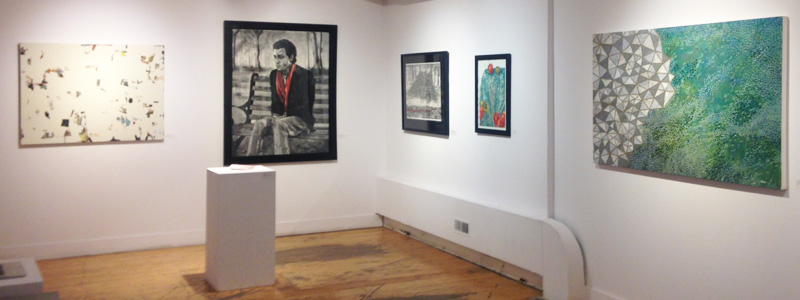
There's a lot to love and hate in an all media art exhibit.
On the plus side there's plenty to look at and much of it is wonderful. An all media show can provide visitors with a tantalizing array of original ideas and novel approaches to making art. It can be energizing and thought-provoking. On the other hand, it can seem like an all-you-can-eat buffet, and feelings after a visit can feel like aesthetic indigestion from an overdose of visual sensation.
Paul Kotula, this year's juror for Free Wet Hugz, the 94th annual all media show at Ann Arbor Art Center's 117 Gallery, has spared us an art bellyache with his judicious editing and careful arrangement of the works on display. This exhibit features about a third fewer entries than last year's, with the result that the art that's included has room to breathe.
Kotula has chosen to put his emphasis on abstract painting, and this is some of the strongest work in that medium I've seen locally in quite some time.
I have always liked John McLaughlin's small drawings, but had reservations about his larger paintings, which seemed busy and disorganized to me. With Drawing a Blank, McLaughlin seems to have resolved the question of how much visual incident to include in this larger format. His abstract but referential fragments feel comfortable on the picture plane and just right.
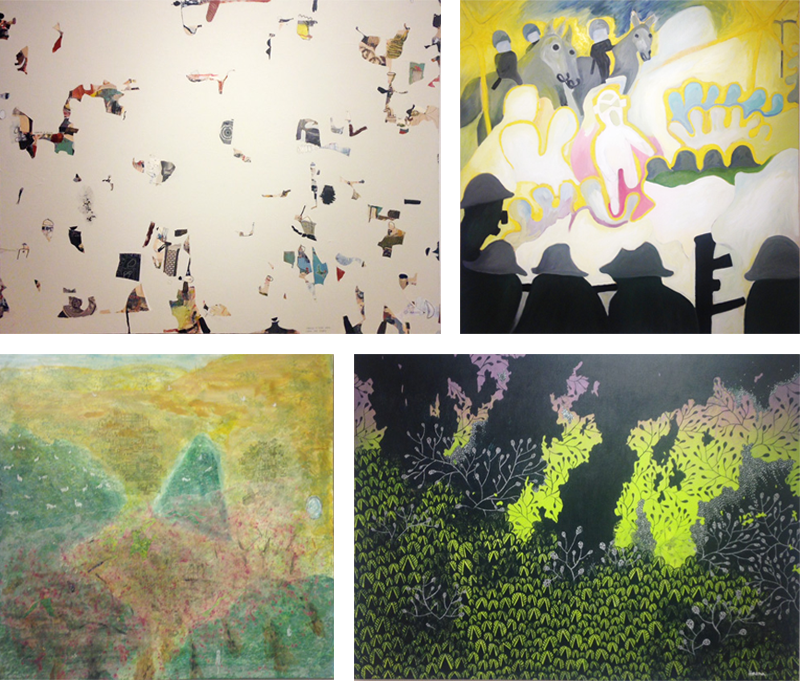
Rocco DePietro's Night Demonstration, with its horses, helmeted men and gas masked central figure puts me in mind of German expressionism of the early 20th century, and it’s his best painting to date.
And there is also plenty of wonderful work by artists who are new to me. A dreamy painting by Yuling Chuang entitled Exist, Co-Exist: Harmony 2, is composed along the lines of a traditional Chinese map. Diminutive line drawings of toy-like cities share the landscape with tiny white ghost figures.
Also impressive are two paintings by Haena Kang. In Boundless and Embrace she employs pattern painting to create the impression of undulating seascapes, or perhaps kelp beds.
Let's Dance by Chia-Yi Huang, Scenario by Jack St. John, and the ambitiously scaled Abstraction #14 (Meltdown) by Dennis Jones are terrific examples of abstract painterly painting. In a more figurative vein, Chaos in Captivity by Jean-Paul Aboudib and No Fear by Nathan Margoni are powerful and disturbing.
There were fewer works of photography and sculpture than in years past, but they, too show the result of careful curation. Most of the sculpture consists of simple assemblage like Folded Drawing 5 and Folded Drawing 8 by Ruth Koelewyn, edging over into installation with In Memorium by Gloria Pritschett and Loraine Lynn’s glass, wood and brick construction, 85 Hours. Bruce Giffin, a gifted photographer who is well-known for his pictures of Detroit and its residents presents us with Bill and His Chihuahuas. A small, remarkable photo, Conduct Becoming: Surveys #3 and #4, by CJ Breil, tells the entire life story of an elder couple in a single image.
On the basis of the paintings alone, Free Wet Hugz deserves a visit and when you add in the small but choice selection from other media, it's a no-brainer.
K.A. Letts is an artist and art blogger. She has shown her work regionally and nationally and in 2015 won the Toledo Federation of Art Societies Purchase Award while participating in the TAAE95 Exhibit at the Toledo Museum of Art. You can find more of her work at RustbeltArts.com.
Free Wet Hugz: 94th Annual All Media Exhibition is on display through Saturday, November 12, 2016 at the Ann Arbor Art Center, 117 W. Liberty St., Ann Arbor, MI. 48104.. More information about the exhibit can be found at the Art Center's website.
Fabulous Fiction Firsts #617

Mischling * * * by Affinity Konar is at once horrific and brimming with life and hope, even with humor in the most unexpected of places.
Brown-eyed and fair-haired, 12 year-old twins Pearl and Stasha Zagorski were often mistaken for "mischling" (mixed-blood, persons deemed to have both Aryan and Jewish ancestry) according to the Nuremberg Laws.
Arriving at Auschwitz with their mother and grandfather in the fall of 1944, they were immediately plucked for the experimental population of twins known as Mengele's Zoo. While Stasha was bold, impulsive, and given to storytelling; Pearl was more restrained and observant. Narrating in alternative chapters, the twins realized early on to survive, they would have to "divide the responsibilities of living between (them) - Stasha would take the funny, the future, the bad, (Pearl) would take the sad, the past, the good". Little did they know how that would become their destiny.
When Pearl disappeared during a winter concert orchestrated by Mengele, Stasha grieved for her twin, but remained hopeful that Pearl lived. As the camp was liberated by the Red Army, Stasha escaped the death march with Feliks, a boy bent on vengeance for his own lost twin. Together, they endured starvation and unspeakable war devastation, encountered hostile villagers, Jewish and resistance fighters, sustained only by the hope that Mengele might be captured and brought to justice.
Readalikes: Lilac Girls by Martha Hall Kelly, and All the Light We Cannot See by Anthony Doerr.
* * * = 3 starred reviews


































